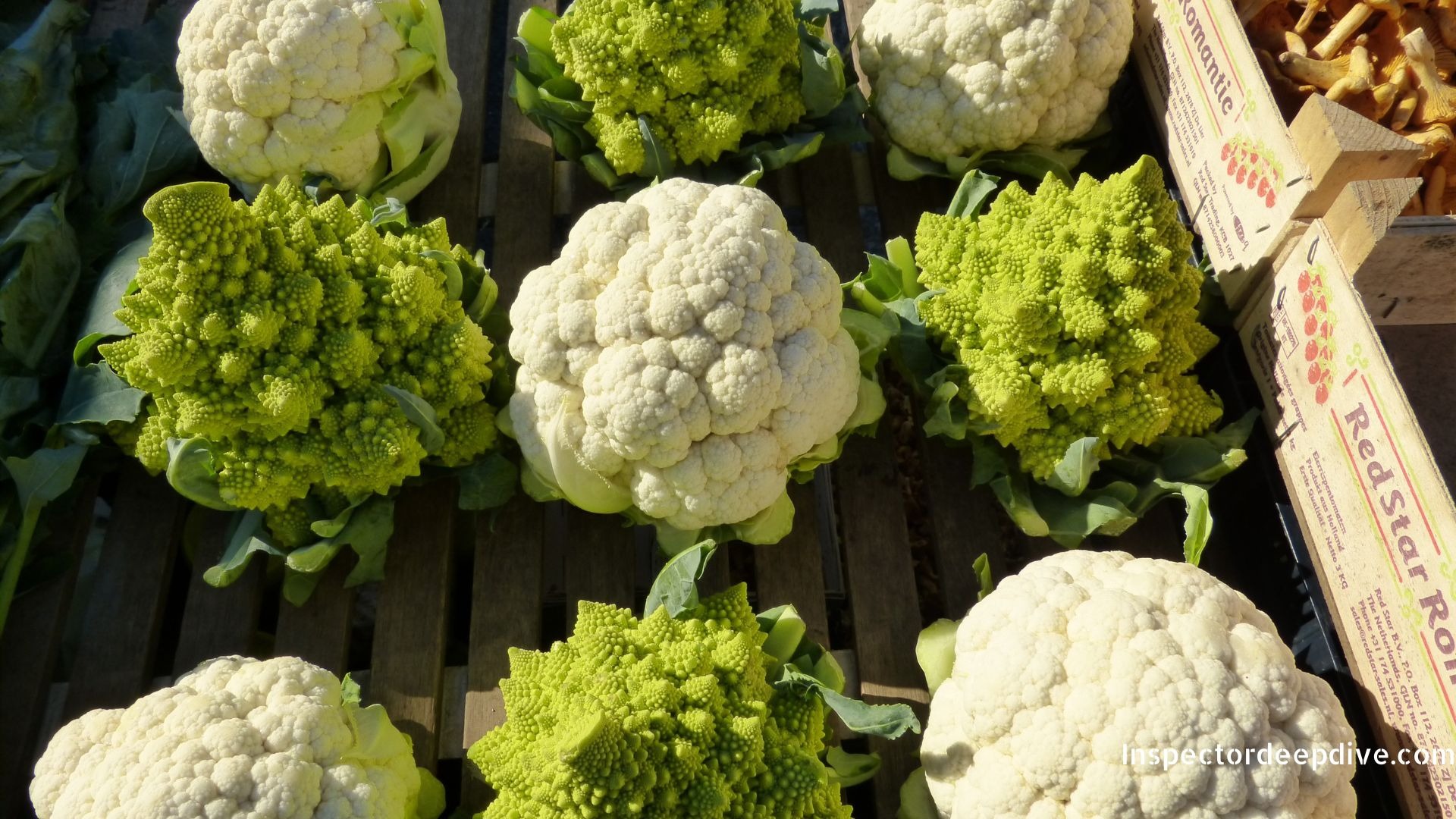
Cauliflower Is a Superfood for Detox and Immunity

Scientific Name: Brassica oleracea var. botrytis
Family: Brassicaceae
What Is Cauliflower?
Cauliflower is a cruciferous vegetable known for its compact, white florets and mild flavor. It is the edible head of the plant, made up of undeveloped flower buds. Cauliflower is popular for its versatility and can be eaten raw, steamed, roasted, or used as a low-carb alternative in dishes like cauliflower rice and pizza crusts.
Where Does It Come From?
Cauliflower originated in the Mediterranean region, developed from wild cabbage through selective breeding. It spread through Europe and later to Asia and the Americas. Today, top producers include India, China, and the United States.
How Many Varieties?
Cauliflower comes in several varieties including white, orange, purple, and green (broccoflower). White cauliflower is the most common, orange contains beta-carotene, purple gets its color from anthocyanins, and broccoflower has a light green hue with a sweeter taste.
Seasonality & Availability
Cauliflower grows best in cool seasons, with peak availability in autumn and early winter. Thanks to modern farming, it is available fresh and frozen year-round. Choose firm, white heads free of browning for best quality.
Benefits of Cauliflower
Supports detoxification and liver health
Boosts immunity with vitamins C and B
Aids digestion with fiber
May reduce cancer risk with antioxidants
Low in calories, good for weight management
Supports heart health and healthy aging
The Anti Factor
Anti-inflammatory: Sulfur compounds and antioxidants reduce inflammation.
Antioxidant: Rich in vitamin C, quercetin, and glucosinolates that fight oxidative stress.
Detoxifying: Activates liver enzymes to remove toxins.
Immune-supporting: Vitamins C and B strengthen defenses.
Heart-protective: Fiber and choline help lower cholesterol and inflammation.
Nutritional Breakdown (per 50g cooked)
Vitamins:
Vitamin C: 21 mg immunity and skin health
Vitamin K: 8 µg blood clotting and bone strength
Folate: 34 µg fetal development and DNA synthesis
Vitamin B5: 0.4 mg hormone production and fat metabolism
Vitamin B6: 0.1 mg brain function and neurotransmitter balance
Minerals:
Potassium: 147 mg heart rate and muscle function
Phosphorus: 20 mg energy storage and cell function
Calcium: 12 mg bones and teeth
Magnesium: 9 mg nerve and heart function
Manganese: 0.15 mg antioxidant defense and bone health
Macronutrients:
Calories: 12 kcal low energy, nutrient dense
Water: 44 g hydration and cell function
Protein: 1.2 g essential amino acids
Total Fat: 0.2 g virtually fat-free
Carbohydrates: 2.5 g natural sugars and fiber
Dietary Fiber: 1 g digestion and fullness
Sugars: 1.2 g natural fructose and glucose
What Cauliflower Does for Your Body
Cauliflower provides bioactive compounds that support multiple body systems:
Cellular Detox: Glucosinolates activate liver detox enzymes to neutralize harmful substances.
Hormone Balance: Helps regulate estrogen metabolism, especially when eaten with broccoli and Brussels sprouts.
Inflammation Control: Sulforaphane and related compounds reduce chronic inflammation linked to disease.
Brain Health: Choline supports memory and cognitive function.
Gut Wellness: Fiber feeds beneficial gut bacteria and promotes regular digestion without bloating.
Synergistic Nutrients
Cauliflower’s benefits increase when paired with:
Healthy fats (olive oil, avocado, nuts) to boost absorption of fat-soluble compounds.
Other cruciferous vegetables (broccoli, kale, cabbage) for enhanced detox and hormone support.
Spices like turmeric, garlic, and black pepper to activate protective pathways.
Lemon juice to improve mineral absorption and balance flavor.
Surprising Truths
Purple cauliflower’s color comes from anthocyanins, which have anti-aging effects.
It’s a popular grain substitute, making it keto- and paleo-friendly.
Raw cauliflower retains more glucosinolates than cooked.
Despite low calories, it’s a good source of choline, important in plant-based diets.
Historically, cauliflower was a luxury food for royalty.
Environmental Impact
Cauliflower farming uses moderate water and land resources. It has a relatively low carbon footprint compared to animal agriculture. Organic and regenerative methods reduce pesticide use and protect soil health.
Storage & Shelf Life
Store fresh cauliflower in the fridge, ideally in a paper bag, for 4–7 days.
Cooked cauliflower lasts 3–4 days refrigerated.
Freezing preserves it up to 8 months with minimal nutrient loss.
Chef or Culinary Tips
Roast florets with olive oil and spices for caramelized flavor.
Use riced cauliflower as a base for stir-fries or bowls.
Blend with garlic and lemon for creamy dips.
Steam gently to keep nutrients and texture for salads or sides.
Recipes or Meal Ideas
Cauliflower fried rice with peas and egg
Cheesy cauliflower mash with butter and garlic
Roasted cauliflower with tahini dressing
Cauliflower crust pizza with tomato and mozzarella
Cauliflower and chickpea curry with turmeric and cumin
Science Behind It
Cauliflower’s glucosinolates convert into sulforaphane and indole-3-carbinol, compounds with anti-cancer properties. These help neutralize carcinogens and support cell repair. Its choline content aids liver function and brain health.
Scientific Breakthroughs As Of 2025
Glucosinolates help balance gut microbiota linked to metabolic syndrome.
New cooking methods preserve up to 90% of sulforaphane content.
Cauliflower-based functional foods support liver detox and immune health.
FAQs
Is cauliflower good for weight loss?
Yes, it’s low in calories and high in fiber.
Can you eat the stems and leaves?
Yes, both are edible and nutritious.
Does cauliflower cause gas?
Some people may experience mild bloating due to FODMAPs.
Why does cauliflower sometimes turn blue when cooked?
Certain anthocyanin-rich types react to pH changes during cooking.
Is cauliflower better raw or cooked?
Both have benefits raw preserves enzymes, cooked increases mineral availability.
Cauliflower Is a Superfood for Detox and Immunity
info@inspectordeepdive.com
© 2025 food.InspectorDeepDive.com. All rights reserved. Content may not be copied or republished without permission.
This article is for informational purposes only. InspectorDeepDive.com does not provide medical advice. Always consult a licensed healthcare provider before making dietary or health decisions.
